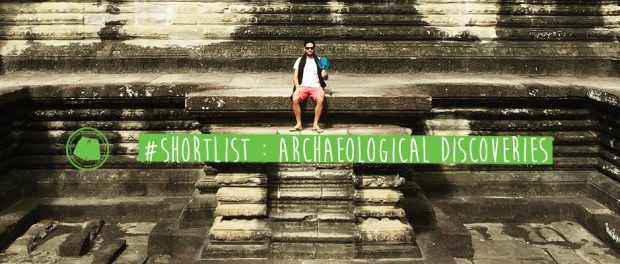#ShortList : Archaeological Discoveries
Still today, discoveries of the ancient past are being made. Some of the most significant finds were only discovered in modern times, laying hidden from civilisation for centuries. Drawing crowds from all over the world to admire these archaeological discoveries continue to provide us with insights into civilisations of times gone by.
Les Grottes de Lascaux, France
Estimated to be older than 17,000 years, these caves contain some of the best known paleolithic cave paintings. Here you’ll see prehistoric man spark creativity with representations of the world around him. The original cave is now inaccessible to the public due to damage from moisture and mould from the thousands of daily visitors – an impressive replica a few hundred meters away was made with a margin of error under 2 millimetres of the original.
Terracotta Warrior Army, China
This enormous army of warriors made entirely of terracotta was discovered in 1974. They were buried at the foot of a funerary pyramid, where they stood guard at the east of the burial site, which represented a microcosm of the then Emperor’s palace complex. In all, there are an estimated 8,000 soldiers, 130 chariots with 520 horses and 150 cavalry horses – all to guard the Emperor in the afterlife.
Pompeii, Italy
After a violent eruption of Mt Vesuvius that covered the ancient city in volcanic ash, the town and its inhabitants lay undiscovered for nearly 1,500 years. Its initial discovery in 1599 came by chance from a surviving letter of an eye-witness to the eruption by Pliny the Younger. During the excavation, cavities were discovered and were subsequently filled with plaster from which the moulds of human bodies and other day-to-day objects were found.
Baalbek, Lebanon
As an ancient Roman city, it was formerly known as Heliopolis. Well-preserved temples to Jupiter, Venus and the god of wine, Bacchus can be found here. In the foothills of Lebanon, 85km from Beirut, it is an archaeological site well-worth a visit.
Angkor Wat, Cambodia
Legend tells of ghosts living in the jungle surrounding the township of Siem Reap, discouraging its inhabitants to venture too far into the scrub. This is how the enormous and impressive temple comlpex of Angkor Wat was left to be reclaimed by nature, the vines of the jungle encroaching the ancient stone structures. The name means “City of Temples,” giving an idea of scale and area that it covers.







Leave a comment